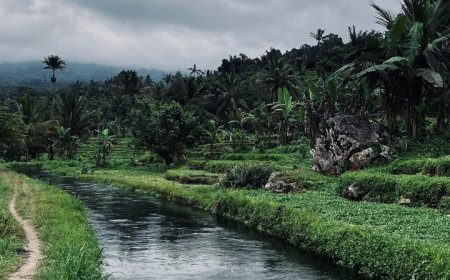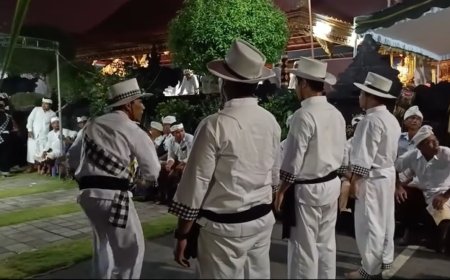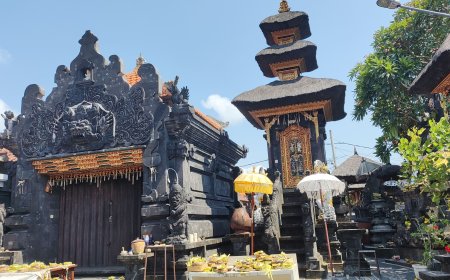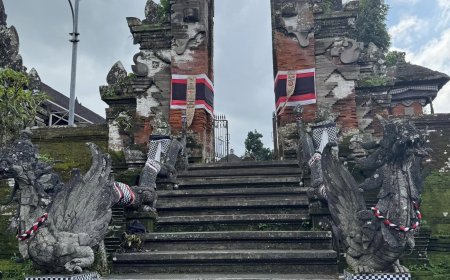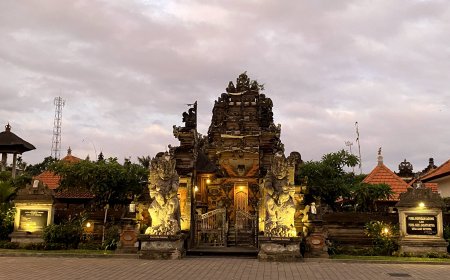Geger Dalem Pemutih Temple: Peaceful Spiritual Vibrations and Natural Tranquility
Pura Geger Dalem Pemutih, located on the island of Bali, Indonesia, is a prominent temple with a beautiful location atop the cliffs offering breathtaking sunrise views. It holds significant spiritual meaning, connected to the journey of Dang Hyang Nirartha, a prominent spiritual figure in Bali. Additionally, Pura Beji, situated near Pura Geger Dalem Pemutih, is a hidden sacred place of importance in Balinese tradition, where people come to seek fertility and perform purification rituals. The entire complex is an integral part of Bali's rich spiritual and cultural life.
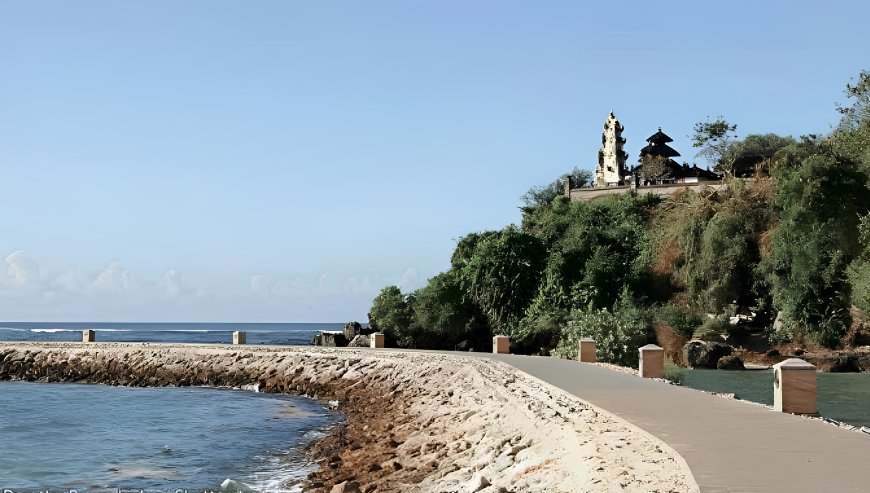
Pura Geger Dalem Pemutih Beach (Source : Pujangga Nagari Nusantara Channel)
Pura Geger Dalem Pemutih, a sacred site located on the island of Bali, Indonesia, is one of the many temples scattered across this island. Bali is renowned for its diversity of temples, and some of them fall under categories such as Sad Kahyangan, Kahyangan Tiga, and Dang Kahyangan. One that stands out is Pura Geger Dalem Pemutih, which is located on Pura Geger Street in the traditional village of Peminge, Nusa Dua, South Kuta, Badung Regency.
Pura Geger Dalem Pemutih offers a unique attraction. Standing tall on a cliff of rocky coral, this temple provides stunning views, especially during the morning when the sun rises. With the beautiful sea as its backdrop, visitors can witness the mesmerizing beauty of the sunrise.
To the north of this temple, there stretches a beach with white sandy shores and calm seawater, while to the south, there is a picturesque coastal area with cliffs. Moreover, within this area, you will find Pura Beji, a place for purification rituals, which is part of the same complex as Pura Geger Dalem Pemutih.
One interesting aspect of many Balinese temples is their location, often situated by the seaside, in the midst of forests, or in mountainous regions far from the hustle and bustle of human activity. There are several considerations for choosing these locations. Firstly, these places are often believed to possess a high spiritual aura. Secondly, being far from crowded areas, they provide tranquility and peace for those who come to worship or meditate.
Lastly, the natural beauty of the surroundings creates a serene and pleasant environment, allowing the mind to be clearer and fresher. Pura Geger Dalem Pemutih, with its impressive location on the seaside cliffs, is a captivating example of the choice of temple locations in Bali.
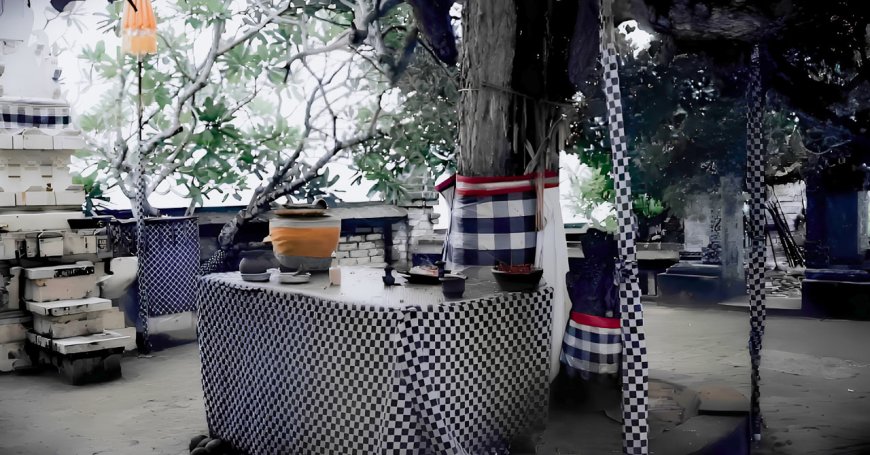
Sawo Kecik Tree (Source : Pujangga Nagari Nusantara Channel)
Pura Geger Dalem Pemutih on the island of Bali is a sacred site that radiates a rich history. According to local stories, the origin of this temple is closely linked to the spiritual journey of Dang Hyang Nirartha or Dang Hyang Dwijendra.
It is said that before reaching his final destination in Uluwatu, Dang Hyang Nirartha took a brief rest at Pura Geger Dalem Pemutih. The charm of the temple's beauty and serenity captivated Dang Hyang Nirartha, prompting him to delve deeper into self-discovery and meditation under the Sawo Kecik tree. Interestingly, the Sawo Kecik tree still thrives today and holds a significant place within the temple complex, situated in the Madya Mandala (central courtyard) of the temple.
The history of Pura Geger Dalem Pemutih is also recorded in the Dalem Pemutih or Dalem Petak Jingga manuscript, a historical document that chronicles important events.
According to this manuscript, in the year 1652 ISaka, there was a rebellion in the Gelgel kingdom led by Dalem Petak Jingga. This rebellion was triggered by a dispute with King Gelgel, Ida Dalem Made. In his journey, Dalem Petak Jingga and his followers arrived at a coral reef on the shores of Geger, where Dalem Petak Jingga practiced yoga and received spiritual blessings. This location became a significant milestone in his life's journey. Subsequently, Dalem Petak Jingga continued his journey and reached the plains of Jimbar, now known as Jimbaran.
Pura Geger Dalem Pemutih holds deep meaning and significance in Balinese tradition. The name "Pemutih" refers to "Dalem Segara" or "Dalem Pamutih," which is the revered shrine within the temple.
Ida Batara Dalem Segara or Ida Batara Dalem Pamutih is believed to embody the attributes of God in the form of pure and sacred white color. Therefore, the temple is associated with the worship of Lord Siwa or Iswara, often symbolized by the immaculate white color. This temple is a vital place for seeking fertility, safety, well-being, and for conducting the sacred Nangluk Merana ceremony in Balinese tradition.
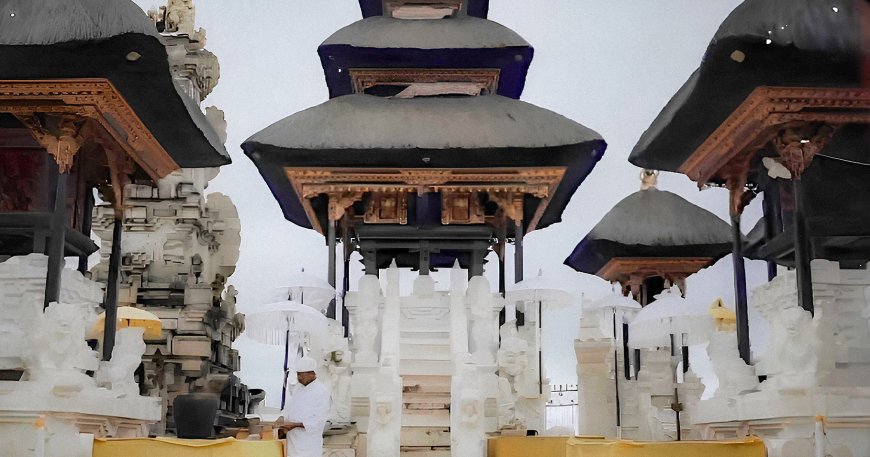
Three-tiered Meru or Meru Tumpang Tiga (Source : Pujangga Nagari Nusantara Channel)
In the main area (Utama Mandala) of Pura Geger Dalem Pemutih, there are several shrines that encompass various significant elements. One of them is the Padmasana shrine, which stands in the center and serves as a sacred place for prayers. To the right of the Padmasana, there is a three-tiered meru or meru tumpang tiga building that functions as the abode of Ida Batara Dalem Pamutih, and next to it is the Gedong Pasadegan shrine.
Not far from there, there is also the Tugu Penyarikan used as the abode of Ida Dalem Gunung Raung, believed to be the final resting place of Dang Hyang Dwijendra. On the west side of Padmasana, the north side, there is a three-tiered meru building used as a gathering place for residents from Puri Satria.
In the central courtyard (Madya Mandala) of the temple, on the east side, a lush and sturdy Sawo Kecik tree grows. In the past, this location was used by Dang Hyang Nirartha for meditation, and now a shrine in the form of a monument has been erected here to worship Ida Batara Ratu Gde Panataran in Ped Nusa Penida.
Pura Geger Dalem Pemutih has a holy day or piodalan on the day of Purnama Keenem Panglong Apisan (one day before the full moon). The temple is managed by two Banjars, namely Banjar Peminge and Sawangan. Every day, a temple priest leads the prayer ceremonies in the temple, making it an active spiritual place in the local community.
About 100 meters to the south of Pura Geger Dalem Pemutih, there is a hidden sacred place known as Pura Beji. Located on the beachside, Pura Beji is a special and meaningful place. Its distinctive feature is the presence of two white and yellow ceremonial umbrellas that rise above the rocky shore.
Inside, there is a shrine built on the rocks, featuring statues of Ganesha and Lingga-Yoni. The presence of Lingga-Yoni here symbolizes purusa pradana, which is a symbol of fertility. Therefore, this place is believed to be where one can seek blessings for children or offspring.
Pura Beji has a corridor connecting it to the beach. The beach itself, although not very large, offers the charm of white sandy shores and the tranquility and peace of the calm sea. From this corridor, there is also access to a freshwater spring emerging from the rocky formations.
This spring is a place for purification rituals, a sacred practice in Balinese tradition. In the morning, the spring is covered by the sea's water and cannot be accessed. However, when the tide recedes, especially in the afternoon or a few days after the new moon (Tilem), the freshwater spring can be found by devotees who come to pray and cleanse themselves.
Pura Geger Dalem Pemutih and the presence of the hidden Pura Beji nearby form a complete and meaningful complex. Many devotees or people come here to worship, especially on holy days like Kajeng Kliwon, Purnama, Tilem, and Banyupinaruh. The presence of Lingga-Yoni in this temple adds to the faith of the Balinese people in drawing closer to God and seeking blessings and fertility in their lives.




















